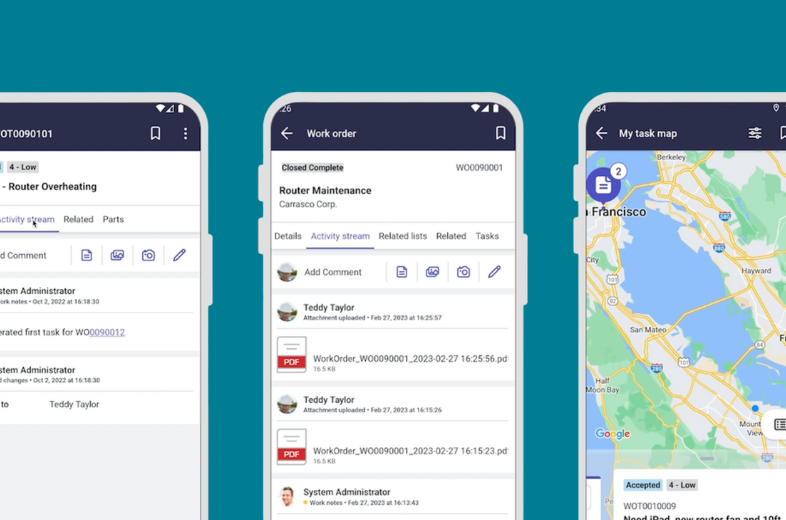How Change Management Leads to Successful Salesforce Adoption

Published Date
Change is inevitable. It's how your organization manages change that will impact future organizational growth. In our recent webinar, panelists from Bolt Data, Salesforce and BusPatrol shared change management strategies to tackle the most impactful change for organizations: business system change.
Handling business system changes, like adopting Salesforce products, requires an effective change management strategy. Without it, a digital transformation initiative like Salesforce is much less likely to succeed. From leveraging gamification to fostering leadership commitment, our webinar panelists reveal how change management leads to successful Salesforce adoption.
If your business is embarking on a digital transformation journey, read on to see how you can prepare yourself as a leader.
The Crucial Role of Leadership in Change Management
Navigating change effectively is the key that can either make or break a transformation effort. It all starts with having commitment from leadership in steering the change journey. Simply toe-dipping in the waters of change isn't going to cut it. For change to truly take root, leadership must be wholeheartedly committed to the cause and communicate its rationale effectively to the entire organization.
This can be achieved by engaging leadership in the transformation planning process. When leaders are part of the process from the start, they're more likely to feel a sense of ownership which encourages them to share their own insights and set clear objectives to see the project through.
During the planning process, leadership must address how the change will impact the organization's people, their processes and their technology. In the webinar, panelists shared important questions leaders must ask themselves as they develop their change management strategy:

A Dual Approach to Successful Salesforce Adoption
While leadership's commitment to embracing change is crucial, it's equally important to appeal to employees by adopting a dual-pronged approach to change management. Leaders need to convey a "what's in it for me" message that resonates with employees. Oftentimes, employees and teams are resistant to change, so leaders need to motivate and encourage employees to embrace change.
To effectively secure buy-in from employees during the implementation of Salesforce, here are some tactics our webinar panelists shared:
- Communicate the reasons behind the change and and the positive impact Salesforce will have on daily tasks and efficiency.
- Conduct comprehensive training and offer ongoing support to help employees adapt to Salesforce.
- Involve employees in the process by gathering their feedback and incorporating their suggestions into the new Salesforce build when possible.
- Recognize and reward employees that embrace the change and show their willingness to learn and adapt to a new system on Salesforce.
How BusPatrol Used Gamification to Drive Technician Adoption

During the webinar, Alex Lane, EVP of Global Field Operations at BusPatrol, discussed his organization's strategy for boosting employee adoption through gamification. Alex addressed the challenge of introducing a new system to his team of field technicians who primarily worked in the field rather than behind office desks. To enhance adoption among the technicians, they were incentivized with points for their activities within the new Salesforce system. This gamification approach not only increased motivation among employees but also promoted a better understanding of their new Salesforce environment among the technicians.
Lessons Learned for a Successful Go-Live
In addition to their experience with gamification, Alex Lane shared lessons he learned from BusPatrol's Salesforce go-live. Alex shared that careful and strategic planning upfront laid the foundation for their successful go-live. Engaging key stakeholders and end-users throughout the process was also a necessity, ensuring their ownership and commitment to the change. Alex also stressed the importance of customizing training to their technician's needs and aptitude for technology.
Alex's final piece of advice revolved around reporting and data utilization. By anticipating reporting needs from the beginning, Bolt Data was able to build robust dashboards that provide real-time insights, transforming how they make decisions and address challenges.
One Size Does Not Fit All
When addressing the question of a formal change management process, panelists agreed that a tailored change management approach to an organization's unique circumstances are key. The complexity of processes, the scale of the organization, and the geographic span all influence the required level of change management. From a global deployment to a smaller organization, the essence of change management remains, but the structure can be adapted.
Ultimately, change management is not a one-size-fits-all solution. As organizations embrace change, they must consider their own unique requirements and harness the power of change management to navigate the challenges and opportunities ahead. As a Salesforce partner, Bolt Data has helped many clients like BusPatrol manage change for successful outcomes. If your organization needs expert change management guidance to adopt Salesforce, get in touch with us today for a no-obligation strategy session.




